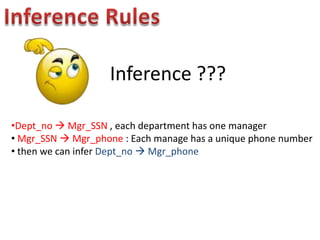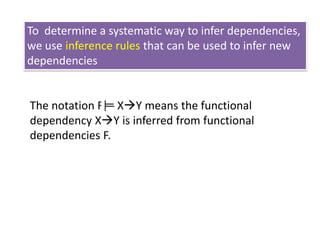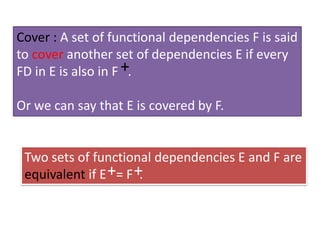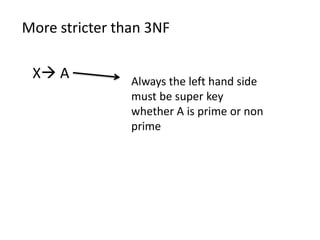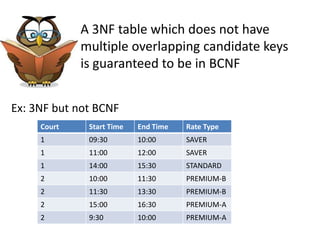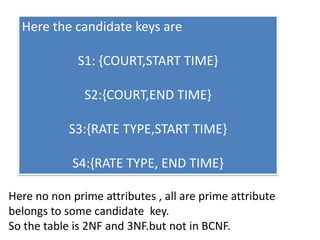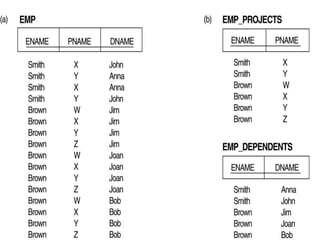This document discusses database normalization forms and dependencies. It covers:
- The two levels of discussing relation schema quality (logical and implementation)
- Informal measures of quality like semantics, redundancy, NULL values, and spurious tuples
- Functional dependencies, inference rules, closure, and finding a minimal cover
- First, second, third, and BCNF normal forms and their definitions/conditions
- Non-prime and prime attributes
- Other dependencies like multivalued, join, and their relationships to higher normal forms.










